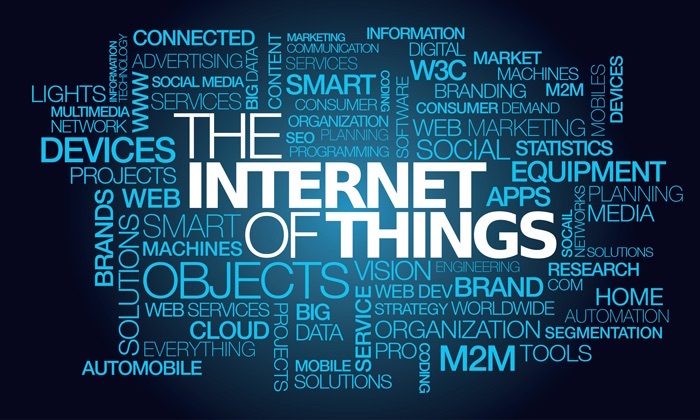What does the phrase Internet of Things, or IoT, mean to you? For many, it’s an ambiguous reference, yet at the same time, it’s a complex concept. Some suggest it’s a consumer trend that will have limited application in agriculture, while others say it’s confusing and its application is unknown at this point.
How IoT will impact the ag industry is debatable, but results of a recent Precision Farming Dealer online poll suggest that dealers view IoT integration as a game-changer. Some 72% of respondents said the Internet of Things — rooted in simplicity and connectivity of technology tools to include voice activation systems — will revolutionize farming through increased connectivity, automation and mobility.
But how far along is agriculture in its adoption of IoT concepts and what does the future hold for development of these progressive platforms? Our editors spent time with precision farming representatives from 5 ag manufacturers to understand how they define IoT, along with the greatest opportunities and obstacles to moving conceptual designs into commercial development.
Q Precision Farming Dealer: IoT is a relatively new concept in agriculture and maybe a little abstract, but how are you defining this trend?

Scott Brotherton, product marketing manager, John Deere: “Looking at our industry and within John Deere, the concept starts with JDLink because that’s the connection from the machine to our cloud service, which is the John Deere Operations Center. The opportunities are limitless to gain more informational insight, whether you are a farm manager, agronomist or ag retailer — it’s going to help you or help that grower do more with less. Personally, I’m a geek about all this. I control my sprinkler system with an app. I have a RoboVac bot that I control with Alexa, which is also controlling my Sirius XM radio. I don’t know if my wife agrees with me, but I am all in on technology to try to make my life a little bit easier.”

Luke Zerby, brand marketing manager, New Holland: “I’m not trying to define IoT at this point because it’s going to continuously change everything with precision farming. It’s more about defining the opportunities. Connectivity is one of the biggest goals as well as the capability to work with a lot of different groups with our APIs. We want to tie in more farm controls back and forth across platforms, so that’s a priority for us.”

Jim Ethington, vice president of product, The Climate Corp.: “The word I come back to is connected. Within that bigger category is the idea of a connected cab. How do I take whatever piece of equipment I have traveling through that field and whatever data is being generated by it and stream it seamlessly into one place? I think of a connected field, whether I have a soil moisture monitor, a rain gauge, a pivot or a trap that catches insects or moths, or something like that.”

Cody Light, senior marketing specialist, AGCO: “It’s getting the internet into the cab and making the machine smarter. It’s not about browsing YouTube and looking at email. If we can provide direct connections to 2 pieces of data that are important to the customer, like commodity prices or weather, and integrate those into the machine, that’s huge. That’s where things are going to be more beneficial, instead of just having an internet browser on a terminal.”

Fabio Isaia, CEO, Topcon Agriculture: “We are rebuilding our software to be a piece of a vertical application in our platform that we’re going to sell as a subscription instead of a license. It’s a big transformation, but we believe this is the direction the industry is heading. We already see the big manufacturers are trying to go this way.”
Q PFD: When it comes to data capturing and integrating or sharing collected knowledge, what is most important?
Ethington: “We’ve been asking growers for a while ‘What are the main uses that you have for the data you collect?’ By far the number one response is ‘I am saving it for later when somebody figures out how to do something useful with it.’ Making it easy to put all that data into one place and actually doing the hard work to figure out how to turn that into insights and better decisions is what we’re working toward. It all starts with connected piece of machinery because it’s really a lot of work to move data around all the time by hand and a lot of that data doesn’t end up getting used.”
Zerby: “If a farmer hears about an agronomist who lives in California, but he happens to be farming in Ontario, he can still work with that agronomist and get an answer right away. IoT is about making sure we have that flow and transfer of data and we’re transferring the correct data.”
Q PFD: Precision specialists tend to be a primary point of contact for customers today. What role will your dealers play in implementing IoT tools and concepts onto customers’ farms?
Isaia: “Our dealers are going to be key, but they cannot think that 15 years from now their job will be exactly like it is today. It’s going to be a challenge, but it starts with a change in mindset and thinking about a connected delivery model. We have great expectations and are already seeing the ones who have the right mindset we need, compared to the ones who don’t. Change will drive that next generation of dealer, but it’s not going to be easy for every one of them.”
Zerby: “Keeping it simple is going to be key. But also making sure customers have the connected support they need from the dealership. In areas like Western Canada, it might be a 3-4 hour drive to physically get to a customer. To be able to remotely change a simple setting on a monitor that a hired operator accidentally changed can result in a 5% increase in efficiency. That adds up quickly over thousands of acres.”
Brotherton: “They will be the ones who engage customers with a new kind of support. Using that connectivity as a service tool to diagnose machine issues for the customer before he goes out to the field. That’s where efficiencies within the service department will be gained as well and minimizing downtime for the customer.”
Q PFD: IoT is ingrained in consumer technology we use today. What challenges does the ag industry have to overcome to advance IoT into mainstream farming?
Brotherton: “We have to help farmers understand the why. Why does it matter? If you just tell me technology is cool, it’s not going to be enough. For dealers and their customers to actually take more chances and think these tools can help them, it is really going to require explaining why it matters, and then we can get into the what and the how.”
Light: “One of the biggest hurdles today is just data privacy and security. People want to know their data is safe, no matter what they’re doing. When you start broadcasting things over the internet there are a lot of smart people out there who can tie into that the data. A priority is making sure data is secure and giving growers confidence everything’s going to be okay in the machine and that nobody can tie into it and take control of their machine or their data.”




![[Technology Corner] Discussing AI’s Potential Impact on Service & Support](https://www.precisionfarmingdealer.com/ext/resources/2025/04/11/Discussing-AIs-Potential-Impact-on-Service--Support.png?height=290&t=1744385717&width=400)


